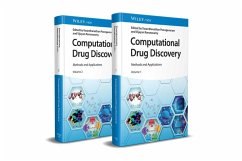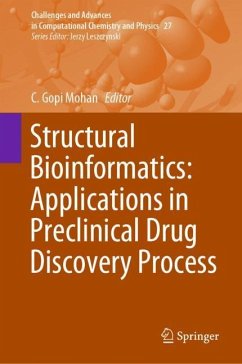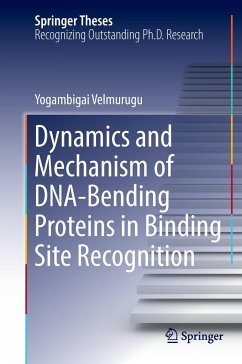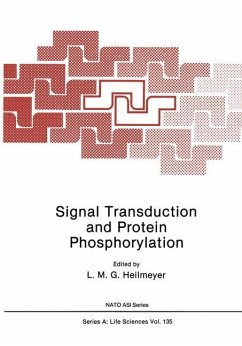
Physics at the Biomolecular Interface
Fundamentals for Molecular Targeted Therapy

PAYBACK Punkte
38 °P sammeln!
This book focuses primarily on the role of interfacial forces in understanding biological phenomena at the molecular scale. By providing a suitable statistical mechanical apparatus to handle the biomolecular interface, the book becomes uniquely positioned to address core problems in molecular biophysics. It highlights the importance of interfacial tension in delineating a solution to the protein folding problem, in unravelling the physico-chemical basis of enzyme catalysis and protein associations, and in rationally designing molecular targeted therapies. Thus grounded in fundamental science, ...
This book focuses primarily on the role of interfacial forces in understanding biological phenomena at the molecular scale. By providing a suitable statistical mechanical apparatus to handle the biomolecular interface, the book becomes uniquely positioned to address core problems in molecular biophysics. It highlights the importance of interfacial tension in delineating a solution to the protein folding problem, in unravelling the physico-chemical basis of enzyme catalysis and protein associations, and in rationally designing molecular targeted therapies. Thus grounded in fundamental science, the book develops a powerful technological platform for drug discovery, while it is set to inspire scientists at any level in their careers determined to address the major challenges in molecular biophysics.
The acknowledgment of how exquisitely the structure and dynamics of proteins and their aqueous environment are related attests to the overdue recognition that biomolecular phenomena cannot be effectively understood without dealing with interfacial behaviour. There is an urge to grasp how biologically relevant behaviour is shaped by the structuring of biomolecular interfaces and how interfacial tension affects the molecular events that take place in the cell. This book squarely addresses these needs from a physicist perspective.
The book may serve as a monograph for practitioners and, alternatively, as an advanced textbook. Fruitful reading requires a background in physical chemistry and some basics in biophysics. The selected problems at the end of the chapters and the progression in conceptual difficulty make it a suitable textbook for a graduate level course or an elective course for seniors majoring in chemistry, physics, biomedical engineering or related disciplines.
The acknowledgment of how exquisitely the structure and dynamics of proteins and their aqueous environment are related attests to the overdue recognition that biomolecular phenomena cannot be effectively understood without dealing with interfacial behaviour. There is an urge to grasp how biologically relevant behaviour is shaped by the structuring of biomolecular interfaces and how interfacial tension affects the molecular events that take place in the cell. This book squarely addresses these needs from a physicist perspective.
The book may serve as a monograph for practitioners and, alternatively, as an advanced textbook. Fruitful reading requires a background in physical chemistry and some basics in biophysics. The selected problems at the end of the chapters and the progression in conceptual difficulty make it a suitable textbook for a graduate level course or an elective course for seniors majoring in chemistry, physics, biomedical engineering or related disciplines.












